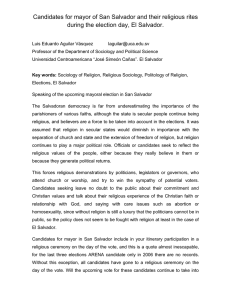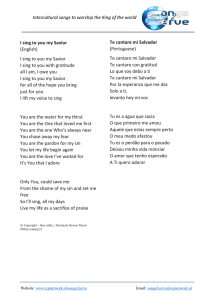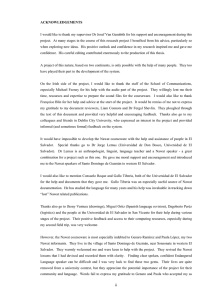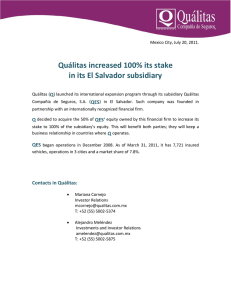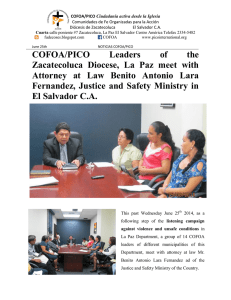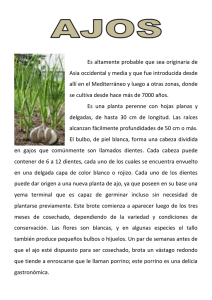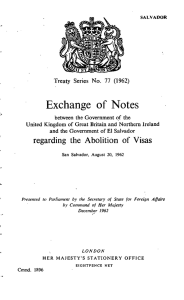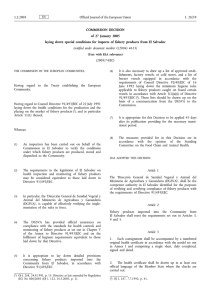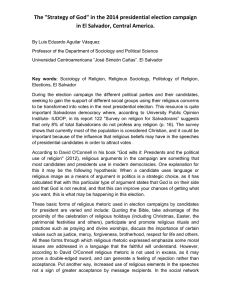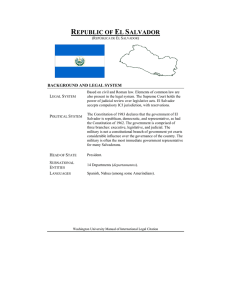paciones de inspiración fascista de Chile de lograr mayor apoyo
Anuncio
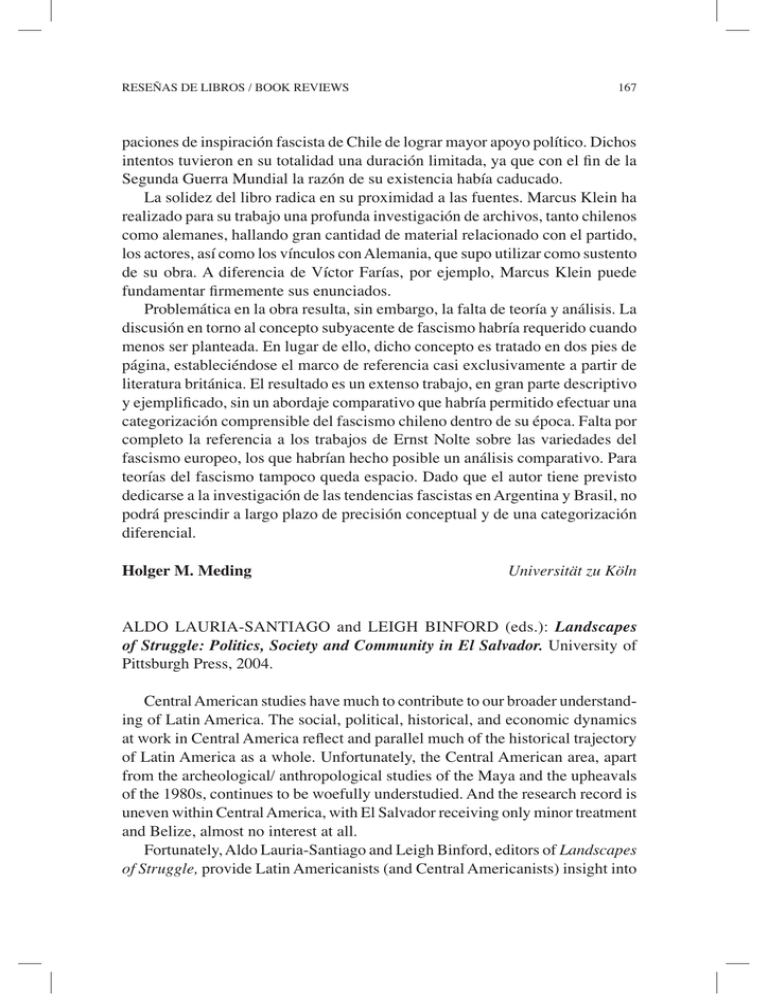
RESEÑAS DE LIBROS / BOOK REVIEWS 167 paciones de inspiración fascista de Chile de lograr mayor apoyo político. Dichos intentos tuvieron en su totalidad una duración limitada, ya que con el fin de la Segunda Guerra Mundial la razón de su existencia había caducado. La solidez del libro radica en su proximidad a las fuentes. Marcus Klein ha realizado para su trabajo una profunda investigación de archivos, tanto chilenos como alemanes, hallando gran cantidad de material relacionado con el partido, los actores, así como los vínculos con Alemania, que supo utilizar como sustento de su obra. A diferencia de Víctor Farías, por ejemplo, Marcus Klein puede fundamentar firmemente sus enunciados. Problemática en la obra resulta, sin embargo, la falta de teoría y análisis. La discusión en torno al concepto subyacente de fascismo habría requerido cuando menos ser planteada. En lugar de ello, dicho concepto es tratado en dos pies de página, estableciéndose el marco de referencia casi exclusivamente a partir de literatura británica. El resultado es un extenso trabajo, en gran parte descriptivo y ejemplificado, sin un abordaje comparativo que habría permitido efectuar una categorización comprensible del fascismo chileno dentro de su época. Falta por completo la referencia a los trabajos de Ernst Nolte sobre las variedades del fascismo europeo, los que habrían hecho posible un análisis comparativo. Para teorías del fascismo tampoco queda espacio. Dado que el autor tiene previsto dedicarse a la investigación de las tendencias fascistas en Argentina y Brasil, no podrá prescindir a largo plazo de precisión conceptual y de una categorización diferencial. Holger M. Meding Universität zu Köln ALDO LAURIA-SANTIAGO and LEIGH BINFORD (eds.): Landscapes of Struggle: Politics, Society and Community in El Salvador. University of Pittsburgh Press, 2004. Central American studies have much to contribute to our broader understand-ing of Latin America. The social, political, historical, and economic dynamics at work in Central America reflect and parallel much of the historical trajectory of Latin America as a whole. Unfortunately, the Central American area, apart from the archeological/ anthropological studies of the Maya and the upheavals of the 1980s, continues to be woefully understudied. And the research record is uneven within Central America, with El Salvador receiving only minor treatment and Belize, almost no interest at all. Fortunately, Aldo Lauria-Santiago and Leigh Binford, editors of Landscapes of Struggle, provide Latin Americanists (and Central Americanists) insight into 168 E.I.A.L. 17–2 the social and historical development of El Salvador. For the most part, the temporal focus of the thirteen papers in this volume is on the twentieth century, with the civil war period acting as a lever between the pre-war and post-war studies. Not without methodological challenge, particularly concerning the availability of source material, the chapters are centered on local (grass roots) or regional constructions. The editors have assembled a collection of essays from both seasoned and newer academics with a deep research interest in El Salvador, all of them experts in their respective areas. In all, about half of the chapters are written from the perspective of anthropology, with the remainder split between history, sociology and political science (in accordance with each authorʼs training). The historical essays concern indigenous communities, land, patronage, and urban middle sectors. Noted historian Aldo Lauria-Santiago illustrates in his es-say of an indigenous village (Izalco) the complexity of intra-ethnic rivalry and conflict, land tenure and privatization, and subsequent external intervention. Víc-tor Hugo Acuña Ortegaʼs case study of the urban-based La Concordia Artisans Society attempts to shed light on El Salvadorʼs middle sectors, particularly their social formation and political ideology, in the first half of the twentieth century. Erik Ching provides the reader new insights into the creation and maintenance of military regimes (e.g., Maximiliano Hernández Martínez) through patronage, utilizing military archival resources in El Salvador. Together, these three chapters unfold the richness of Salvadoran history and hint at opportunities for researchers to explore this virtually untapped historical landscape further. Two other pre-Civil War essays deserve notice; the first deals with industrial labor and female workers, while the second profiles a community established by land reform in 1954. Kati Griffith and Leslie Gates study the role of labor legislation from 1944 to 1972 as a strategic government tool for securing and co-opting urban industrial support. In general, this essay highlights an important topic and provides a nice overview of womenʼs participation in the industrial sector, including concomitant labor legislation. However, it is constrained by the narrow scope of the resources consulted—newspaper accounts and govern-ment publications—and lacks a larger business and economic context. The essay would have been strengthened by interviews with industrialists, archival research utilizing company records, and a more comprehensive understanding of maquiladoras in the region. Carlos Benjamín Lara Martínez provides excel-lent insights into the establishment of and daily life in Joya de Crecén (19541995), a government-planned rural settlement originating from “the push” for agrarian reform. Basing himself on archival research, contemporary accounts, and interviews, Martínez Lara approaches community development holistically and includes local, national and international actors in his case study. Joya de RESEÑAS DE LIBROS / BOOK REVIEWS 169 Crecén is a microcosm of wider events taking place in El Salvador, and worthy of study. As the Salvadoran Civil War and its immediate aftermath are widely known and generally understood by most Latin Americanists, I will not elaborate on the five solid contributions by Leigh Binford, Elisabeth Wood, Vincent McElhinny, Irina Carlota Silber, and Lisa Kowalchuk. However, it is worthy of note that these excellent essays deal respectively with progressive Catholicism in northern Morazán, war and repopulation in Tenancingo, political life in the “revolution-ary” community of Ciudad Segundo Montes (in Morazán), postwar rebuilding in Chalatenango, and the continuing struggle for land in El Salvador. Three essays deal with selected issues in present-day El Salvador— indig-enous peoples, crime, and migration and remittances. Henrik Ronsbo discusses the concept of indigenousness and the complexities of self-identification, politics, and discourse. Ellen Moodie, in the bookʼs most original and emotionally moving chapter (particularly for those of us who have experienced violence and crime first-hand while conducting field research in El Salvador), analyzes contempo-rary violence and crime utilizing the voice of the victimized. She deftly crafts, integrates, synthesizes, and gives meaning to stories of wanton violence, statesponsored/-institutionalized/-protected criminals, vigilante justice, the media and violence and crime, and public opinion on crime and violence. The book ends on a mixed note, since David Pedersenʼs contribution seems out of place in the text as a whole. More journalistic than academic, the essay is essentially an ac-count of the life of a Salvadoran migrant to the U.S. who became a drug dealer in Washington D.C. and then returned to El Salvador with his illicit gains. As a metaphor, this example could have served as an introduction to the issues of Salvadoran migration and identity (both in the U.S. and in El Salvador), crime and crime networks, and the flow of remittances. Overall, Landscapes of Struggle is an excellent addition to the literature on El Salvador. The book is highly accessible and readable, and the editors have achieved their goal of producing a text that is comprised of “locally oriented investigations” that “broaden our knowledge of the country and its history” and “stimulate dialogue and intellectual exchange among historians and other social scientists” (p. 7). Yet the text would have benefited from a concluding chapter, a more rigorous treatment of migration and remittances, a better map of the loca-tions mentioned in the text, and the inclusion of essays from other branches of social science, such as economics. These shortcomings notwithstanding, Land-scapes of Struggle should find a ready audience amongst Central Americanists and an interested following among Latin Americanists in general. Michael J. Pisani Central Michigan University
